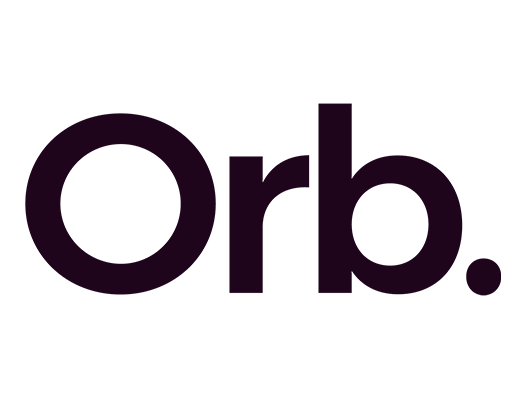
10 signs your brand is holding you back
Many of the SMEs we talk to are high growth companies and scale-ups who’ve covered a lot of ground getting from where they first started to their current success. One comment we frequently hear is: “We know what our brand used to represent, but we’re not sure what it means for us or our audiences now… or whether it will serve us well in the future.”
Ultimately, how your audiences connect with your brand drives choice, and a company can’t grow further without a strong brand at its heart. So, what are the key alarm bells to look for that signal a time to start thinking about the health of your brand – does it have the relevance and credibility needed to represent your business today, and longevity to carry you into the future? Whether you’re the CEO or the Marketing Manager, if you find yourself asking these questions – it could be time to re-think your brand strategy…
1. “Our product or service offering has changed since we first branded.”
In the real world, growing a business is often a rollercoaster process of trial and error… and discovery! As your business evolves, chances are your product offering is expanding or morphing as you find your unique positioning in the marketplace. This is particularly true for fast-paced technology industries, but no business is ever standing still! What’s critical is that your brand keeps up the pace, reflecting who you are, and providing longevity. It needs to provide scope for change, but strong and consistent enough to foster recognition. The old phrase ‘a springboard not a straightjacket’ sums it up!
2. “I’m no longer seeing return on my overall marketing investment. ”
It’s easy to spend huge sums of marketing budget on tactical marketing activity – we can feel as though we’re doing all the right things, but we’re just not getting the response we hope for. The problem is, that even the best tactical campaign can fall flat on its face if it isn’t underpinned by a strong, meaningful brand strategy and brand image. If your audiences simply aren’t engaging with your brand, the impact of any marketing activity will be diluted.
3. “The CEO seems to know where the company is going, but if you asked our employees, each would say something different. ”
A strong brand is one that works from the inside out. It’s often been said that your employees are your best ambassadors and when they truly ‘live the brand’ great things can happen. We only have to look at the Googles, Red Bulls and Land Rovers of the world to see how internal culture can be the lifeblood of a successful brand. There are two questions to think about: 1) Are your leaders communicating downstream in a way that connects with employees, creating a ‘shared vision’? 2) Do employees feel they are proud to be part of the growth of the business – that they are able to make a valuable contribution?
4. “Brand’? Yes – we created a logo, which we use on all our communications.”
A brand is about far more than its marque, or its website – or any single piece of communication. Brand equity resides in the minds of consumers and how they perceive you. The visual identities we all know and connect with instantly are the ones that carry real meaning for us – they have substance and personality. Your logo is a symbol of the values we’ve come to associate with the company – though all its communications with us and our experiences of the brand. If your audiences aren’t connecting with you emotionally, you may need to work at creating a brand that has real meaning for them.
5. “Customer feedback shows our customers aren’t clear about what we do any longer – there’s a gap between what we offer, and how we’re actually perceived.”
As your company grows and develops, it’s easy for your position within the marketplace to become blurred, perhaps leading to confusion for your audiences. Your brand needs to evolve with your business to ensure communications that are:
– relevant, truly reflecting what you offer
– clear, speaking your audience’s language
– differentiated, setting out a unique proposition versus your competitors
6. “We have new audiences and don’t feel our old brand is connecting with them.”
Getting to know your audiences ‘up close and personal’, and keeping on top of segments you appeal to, is the key here. If your customers no longer identify with your brand, then it’s a clear signal to do your research and switch to a brand image that’s going to better connect with them. Whether it’s about rebranding companies to be more professional or playful, more corporate or more creative, it’s simply about what works best for your customers. As you grow and evolve, keep talking to them and capturing their feedback about how they perceive you.
7. “We’ve experienced a landmark change in the management of our business.”
A significant transition within your company is often a good time to take that step, but only if there’s a change in purpose, proposition, or direction. For example, expanding to new markets or going through a merger or acquisition that requires a clarification in what the brand means for internal audiences and customers alike.
8. “Over the years, we’ve bolted on a number of sub-brands as we’ve grown – our customers are finding it complicated.”
As you grow and diversify, it’s easy for things to become overly complex for the outsider. Sure, you may have a handle on the intimacies of your portfolio of products and services, but do your customers find it simple and clear to navigate across your offering and choose the product that’s right for them? Reviewing and rationalising your brand architecture and hierarchy can work wonders – it doesn’t always mean a re-brand as such, but simply a little spring cleaning!
9. “We’re finding it difficult to attract the top talent.”
You want the very best people to help your company grow and flourish – but does your brand carry the kudos needed to attract interest from the best-of-the-best? Does it reflect a company that’s going places? It’s often said that ‘your brand is your reputation’… if the word on the street is negative and you think your employer brand and culture needs work, then perhaps it’s time to take stock and redefine your brand from the inside out.
10. “We’re attracting the wrong customers – conversion rates are low.”
This is all about targeting – if you’re fishing in too big-a pool, you’re going for quantity over quality. Of course, it’s not always about your brand alone, but if you’re attracting the wrong customer, there could be a misalignment between the product you offer and your brand image. The upshot is that you’re engaging audiences who will ‘fall away’ as they discover what you offer isn’t for them, and conversion rates will be low. What you need to be asking is ‘how can we develop targeted brand activity that engages more of the right kind of people?’.

